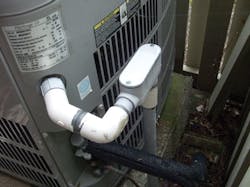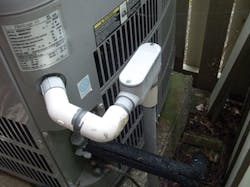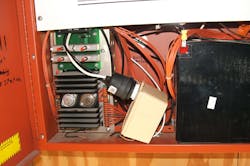What's Wrong Here? Hint: A Tradesman’s Trade?
How well do you know the Code? Think you can spot violations the original installer either ignored or couldn’t identify? Here’s your chance to moonlight as an electrical inspector and second-guess someone else’s work from the safety of your living room or office. Can you identify the Code violation(s) in this photo? Note: Submitted comments must include specific references from the 2011 NEC.
Hint: A tradesman’s trade?
‘Tell Them What They’ve Won...’
Using the 2011 NEC, correctly identify the Code violation(s) in this month’s photo — in 200 words or less — and you could win a $50 gift check. E-mail your response, including your name and mailing address, to [email protected], and Russ will select three winners (excluding manufacturers and prior winners) at random from the correct submissions. Note that submissions without an address will not be eligible to win.
April Winners
Our three winners this month were: Marty Palm, owner of MAP Electric in Milwaukee; Mark Thurlow, a facilities electrician for Roush in Livonia, Mich.; and Fred M. Perilstein, a consulting professional engineer in Springfield, N.J. They all identified several violations associated with this fire alarm panel installation.
Let’s begin with the incorrect use of the temporary type lampholder. According to 410.90 of the 2011 NEC, screw shell lampholders must be installed for lampholder use only. This one was specifically installed in order to screw in a receptacle adapter to accommodate the plug-in power supply. Turning our focus to the power supply problems, we can see the power supply is designed to be plugged into a duplex receptacle and secured with the receptacle plate cover screw. Because this power supply is simply floating free in the bottom of the panel, it’s a violation of the requirements of 110.3(B). In addition, 760.41(B) does not permit loads other than fire alarm equipment to be connected to the branch circuit for this fire alarm panel. This Class 2 power supply is supplying power to equipment associated with and controlled by the fire alarm system but, in fact, is not fire alarm equipment. Section 760.3(E) makes it clear that building control circuits such as this power supply are covered by Art. 725 rather than Art. 760.


